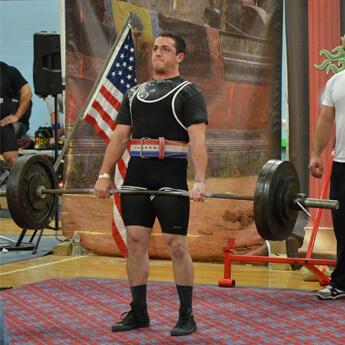Calories Burned Biking: How Many Calories Does Cycling Burn
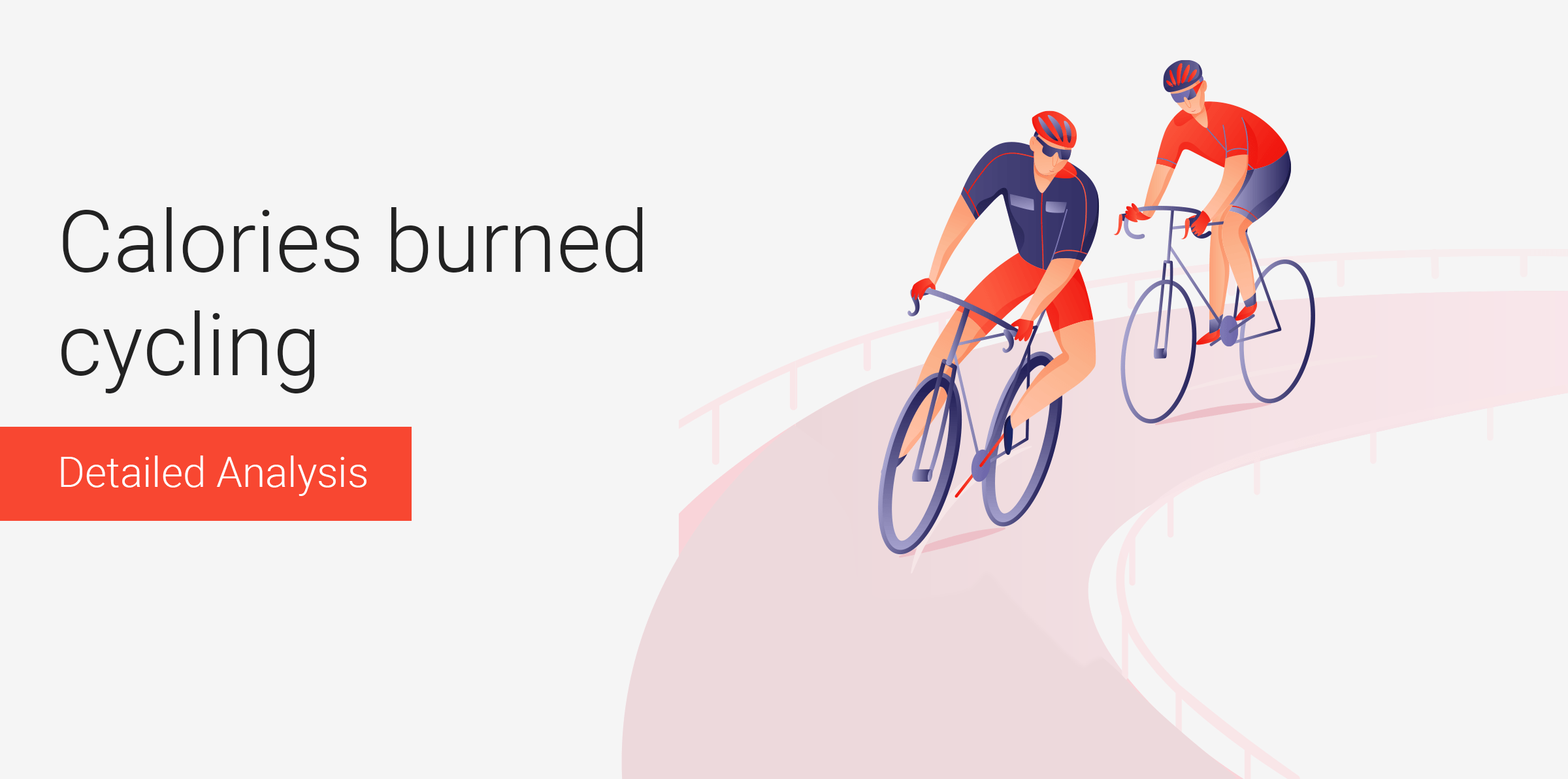
Riding a bike at home or outdoors is on the rise, with our fitness trends report showing outdoor exercise and home fitness as the most popular trends of 2021. We know exercise benefits you in losing weight by burning calories. But we wanted to learn how biking benefits you and just how many calories you burn cycling or riding a stationary bike.
Specifically, this study investigates how many:
- Calories burned cycling per mile
- Calories burned cycling / biking 1 hour
- Calories burned biking per minute
- How much cycling to burn 2,000 calories
- Calories burned mountain biking / bmx vs cycling vs stationary bike vs unicycle
- Calories burned biking by weight
Note: A person’s weight, speed and intensity of biking, time, and distance affect how many calories are burnt. For this study, all data is based on an average weight of 180 lbs and moderate speeds of (12 - 13.9 mph), unless noted otherwise. For comparison, see our detailed analysis of calories burned running and calories burned walking.
Calories burned cycling per mile
A 180-lb adult burns 50.31 calories an hour cycling at a moderate speed (12-13.9mph).
This same person can burn between 32.70 (less than 10 mph) to 65.40 (> 20 mph) calories per mile.
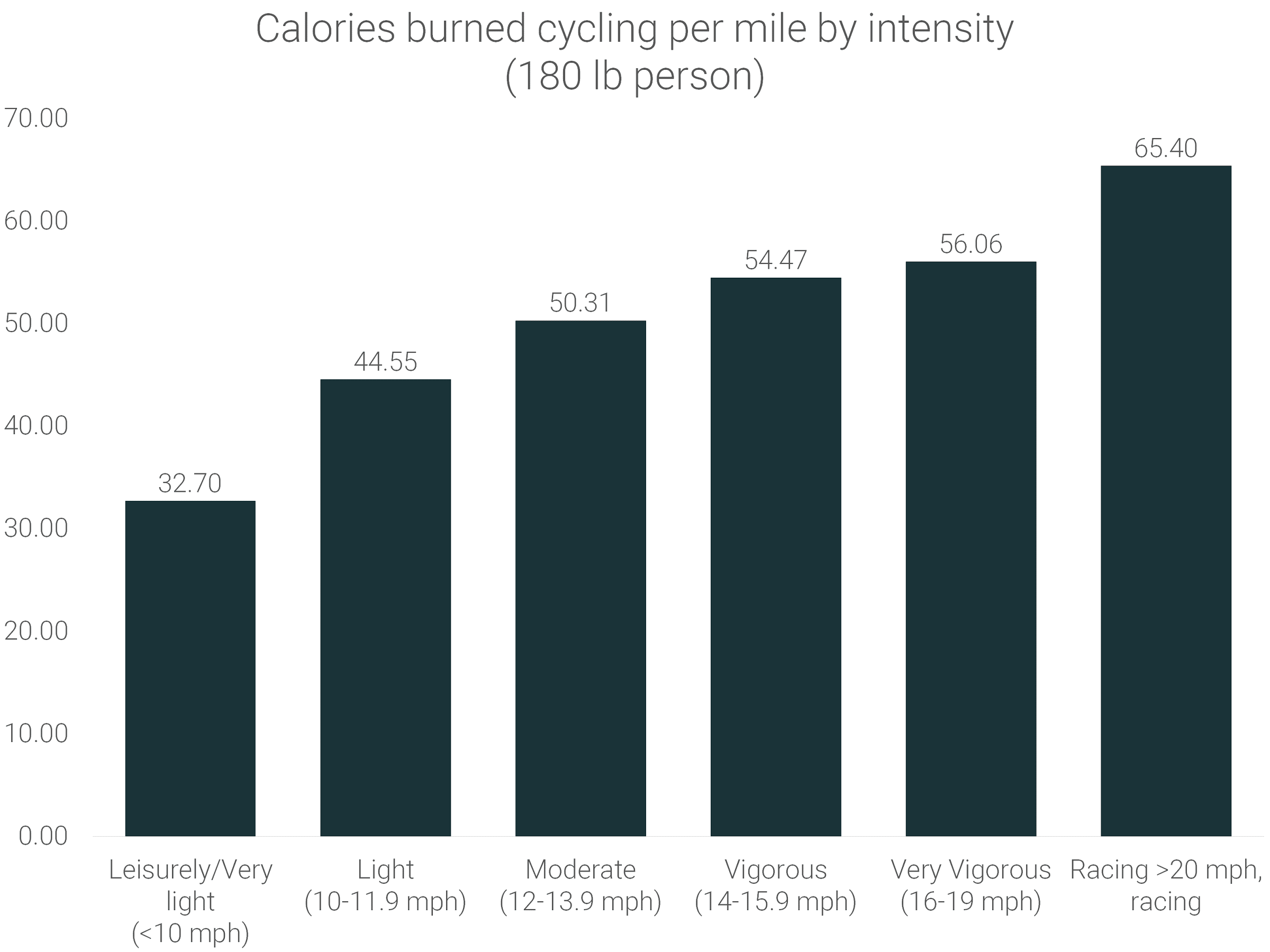
Riding a bike at a moderate intensity, a 180-lb person will burn around 250 calories every 5 miles, which means you would have to ride approximately 40 miles overall to burn 2,000 calories.
Calories burned cycling / biking 1 hour
An hour of cycling at a moderate intensity (12-13.9 mph) will burn 654 calories for someone weighing 180 lbs. That same hour riding on a stationary bike will only burn 572 calories.
Based on the speed and intensity of your ride, you can burn as little as 245 calories on a leisurely ride ( < 10 MPH) and as much as 1022 calories on a very vigorous ride (16-19 MPH).
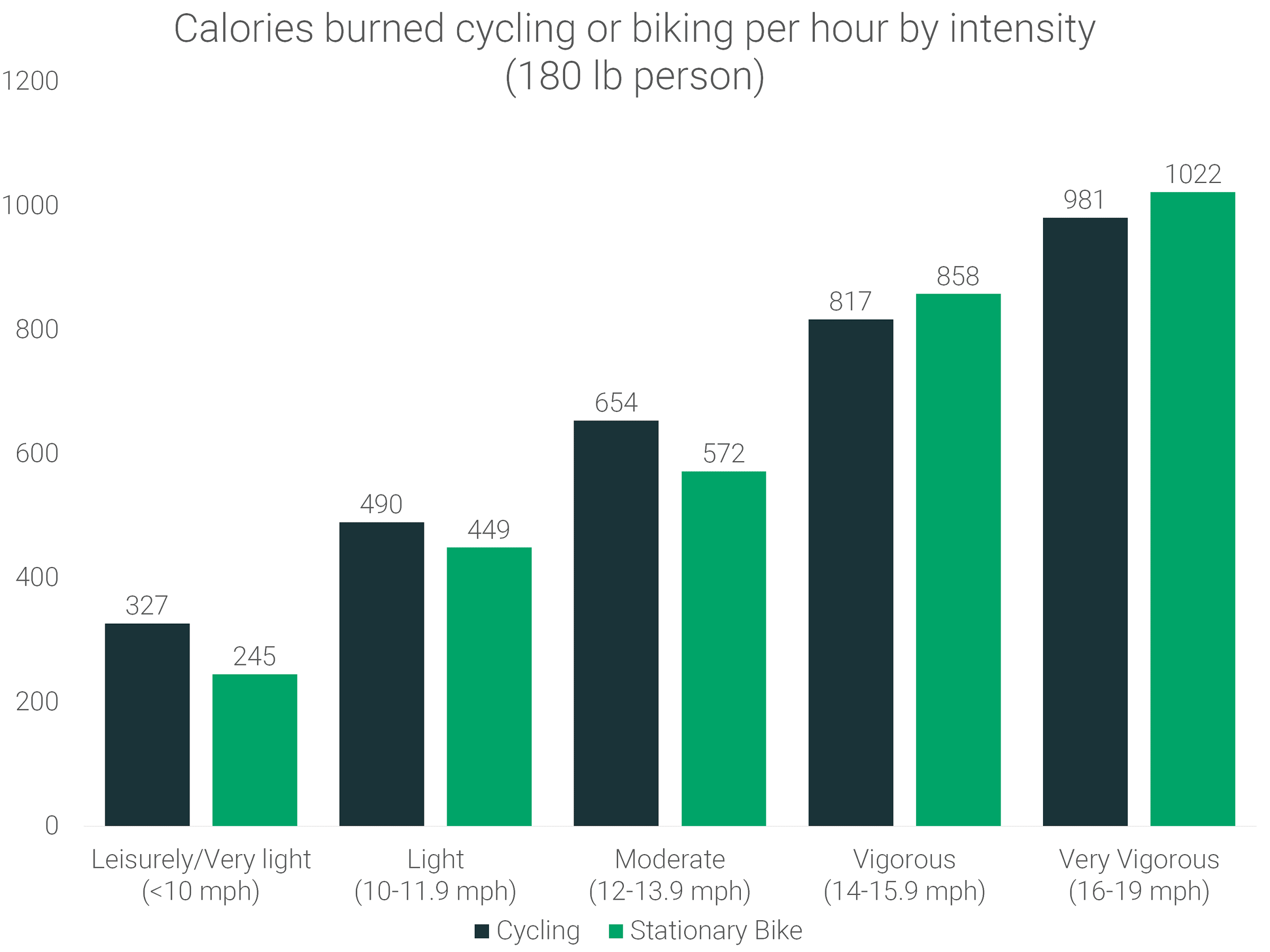
You burn 3x as many calories cycling at a very vigorous pace as you do at a leisurely one.
Meanwhile, on a stationary bike, a very vigorous pace burns 4.17x more calories than a leisurely one.
Calories burned biking per minute
Cycling at moderate speeds of about 12 - 13.9 mph for 20 minutes can burn 218 calories for a person weighing 180 lbs. However, if you use a stationary bike, you burn 12.5% fewer calories or only 190.7.
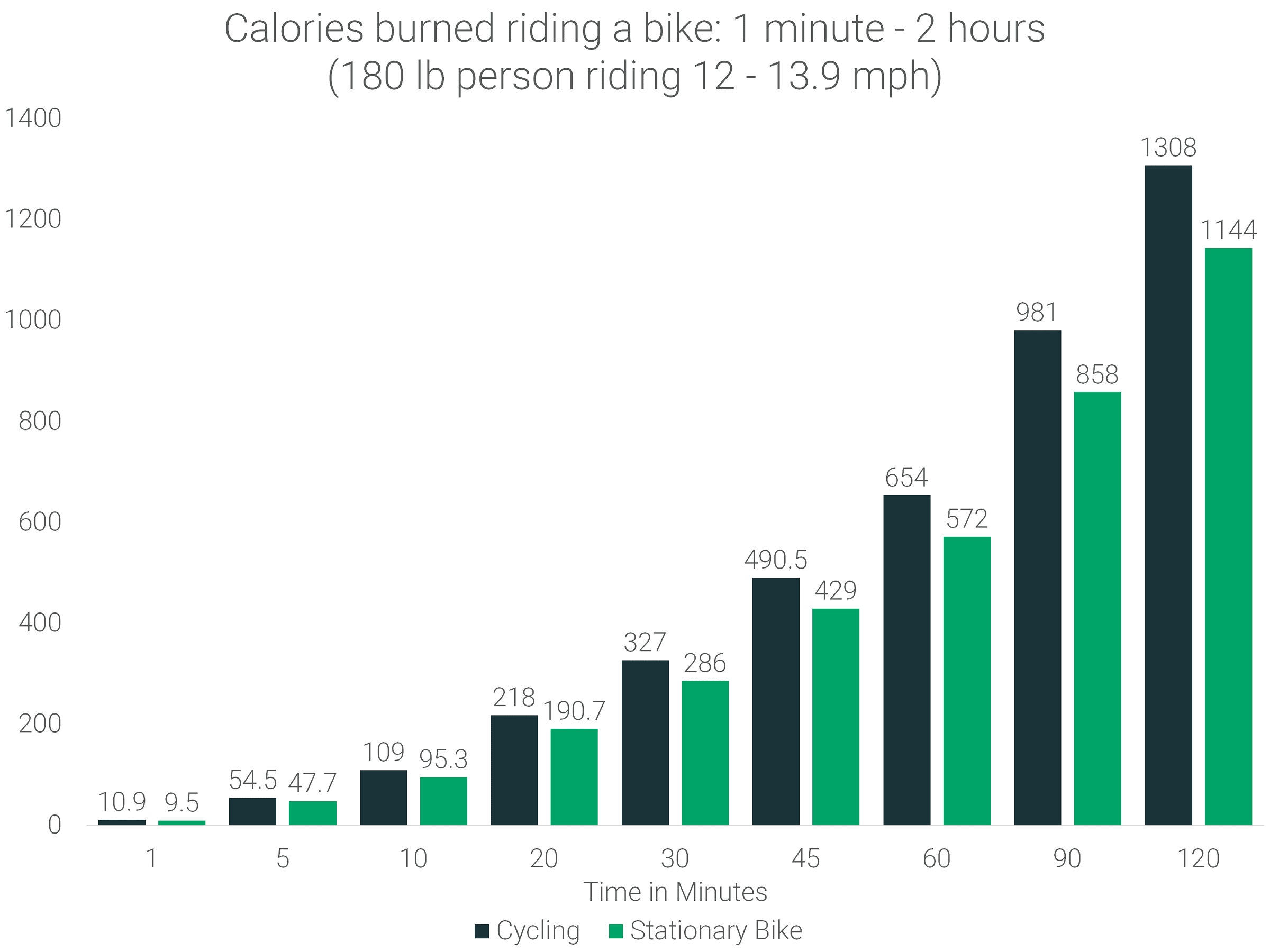
Cycling for 120 minutes or 2 hours can burn between 1,140 to 1,300 calories, depending on if you use a stationary bike or a road bike, respectively.
How much cycling to burn 2,000 calories
To burn 2,000 calories, a person weighing 180 lbs needs to spend 8.16 hours on a stationary bike, going at a speed of less than 10mph. Meanwhile, if you bike intensely, going at 16-19mph, you only need 1.96 hours on a stationary bike.
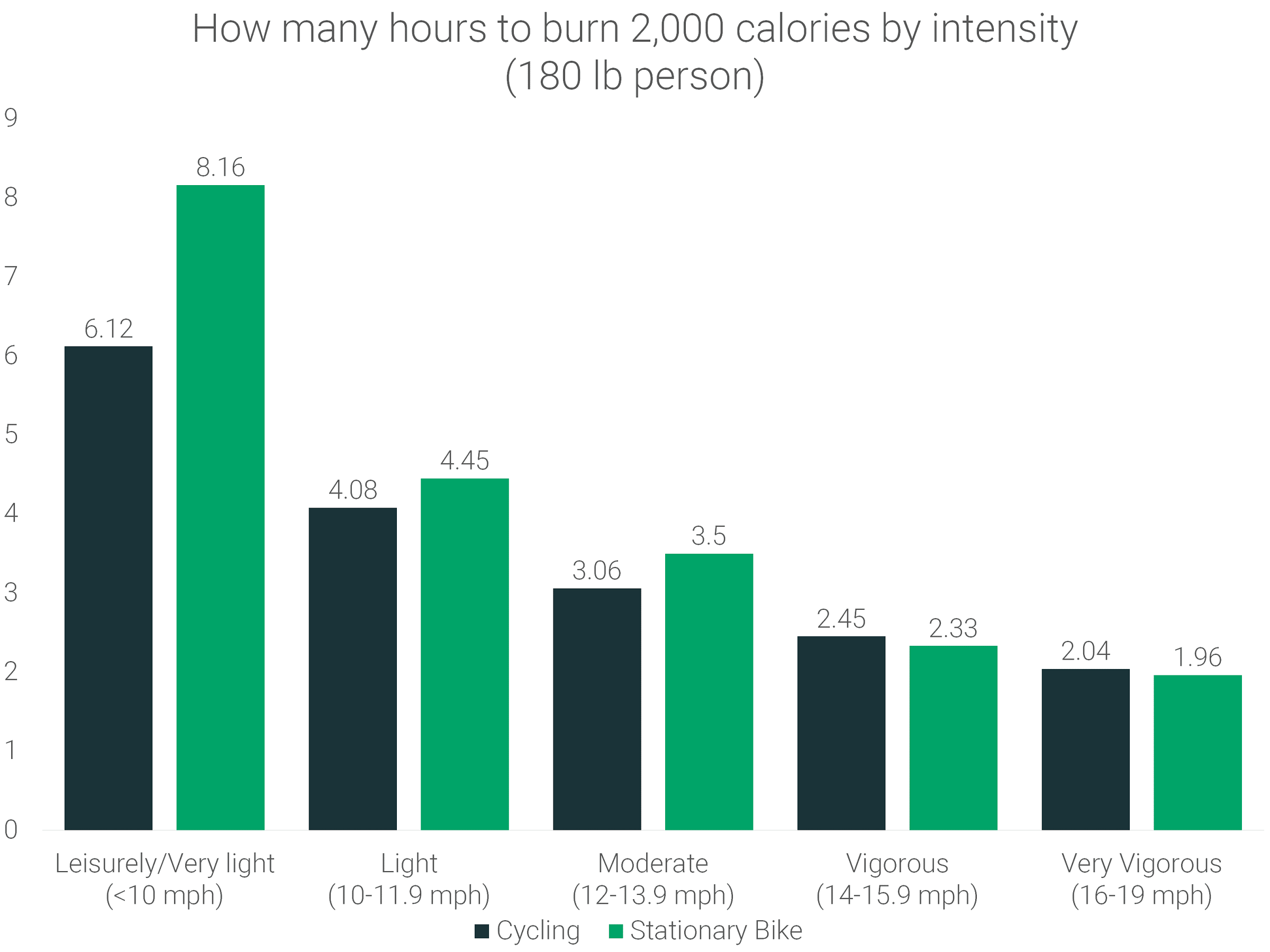
When riding a stationary bike at a leisurely pace, it will take you 33% longer to burn 2,000 calories in comparison to cycling on the road. This is likely due to the other factors involved in cycling, such as balance, turning, wind, and the elements.
However, if you increase the intensity, there’s only a 4.1% difference in the calories burned when riding vigorously on a road bike and a stationary bike.
Calories burned by various types of cycling
Riding a mountain bike or BMX burns 123 more calories compared to those using a stationary bike. Meanwhile, though unicycles seem the hardest to operate, you burn 163 calories more riding a stationary bike.
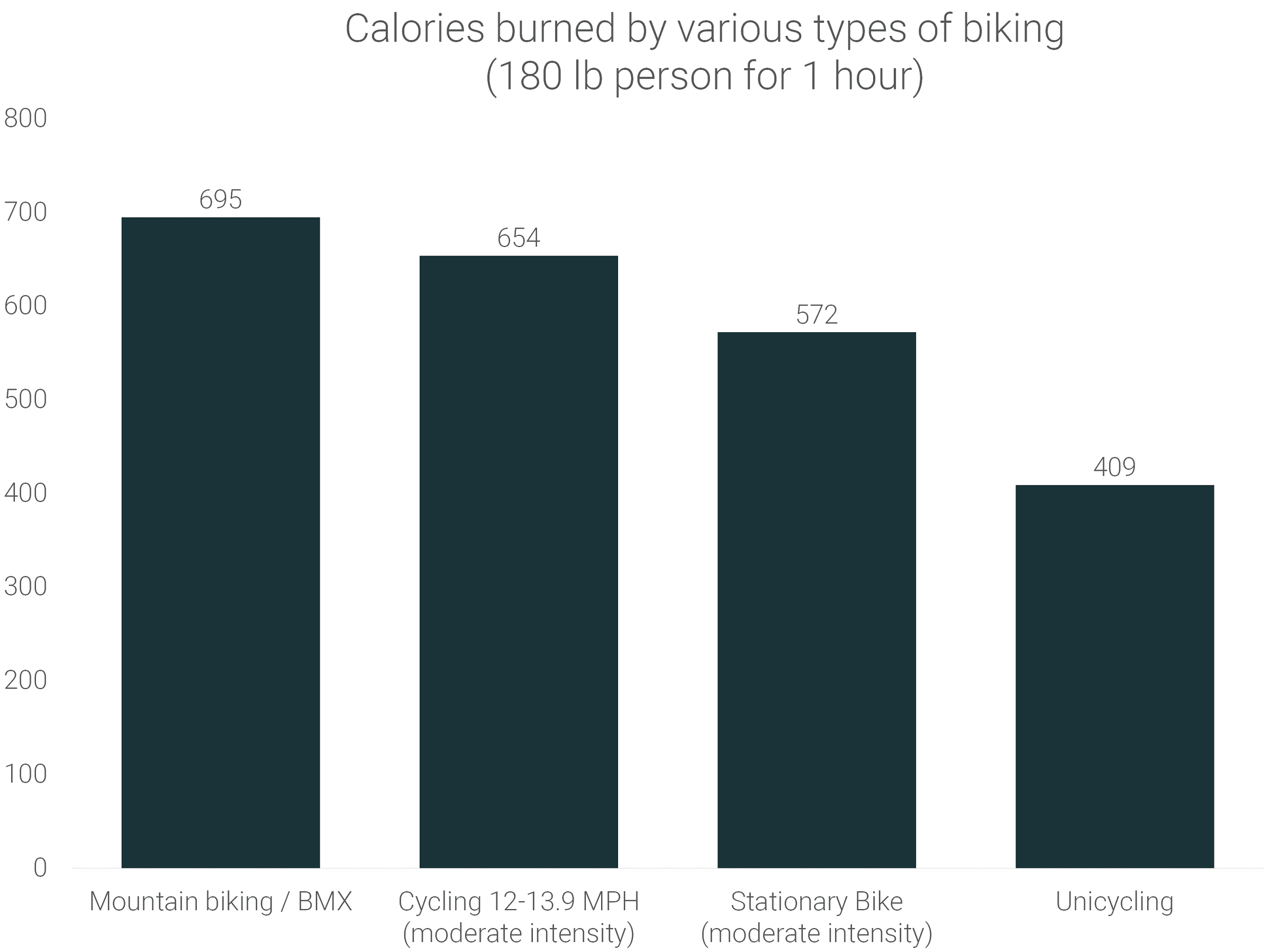
Calories burned biking by weight
A person weighing 205 lbs will burn 425 more calories than a 130-lb person, going at a very vigorous speed biking for an hour. In doing the same task for the same amount of time, more energy is exerted by people who are heavier.

On a stationary bike, the difference between calories burned by a 130-lb and 205-lb person going at a very light pace is 102 calories burnt per hour. Meanwhile, when a vigorous pace is considered, the difference more than doubles, jumping to 284 calories burned per hour.
For a 130-lb person to burn as many calories as a 205-lb person, they must bike at least 1.5 hours more, regardless of the pace.
About RunRepeat
Here at RunRepeat, we buy all the shoes with our own money, we test the shoes by hiking/running/training in them, and we do numerous tests in our in-house lab. There, we cut shoes in half and use instruments like durometers, calipers, microscopes, smoke machine, and Dremmel, to examine the shoes inside out. On our methodology page you can learn everything about our lab tests, instruments and processes.
Use of content
- We are happy to share more information about this topic and related content. Reach out to Nick Rizzo at nick@runrepeat.com to set up an interview or to send further questions regarding this research.
- Feel free to use findings and other materials from this page on any web coverage of the topic. We only ask that you refer, and link, back to this original source.
